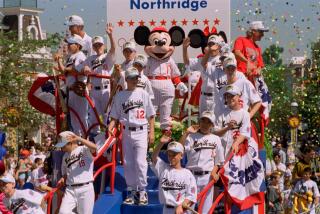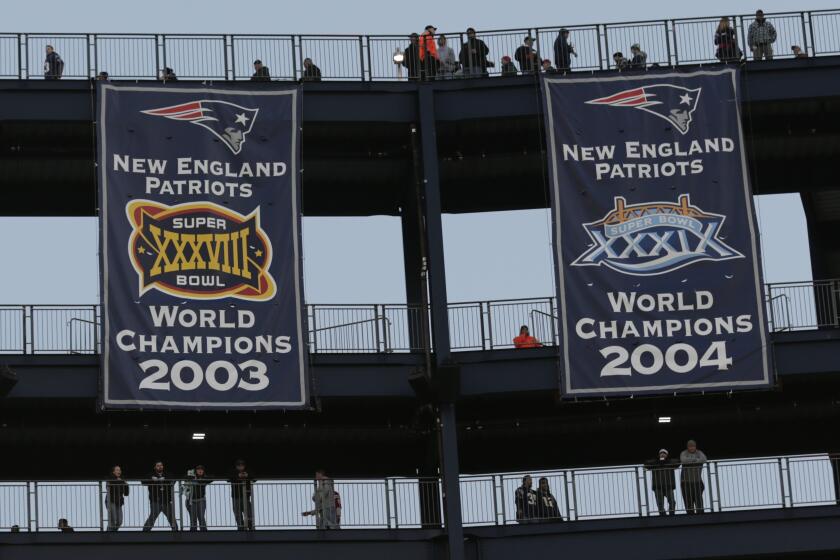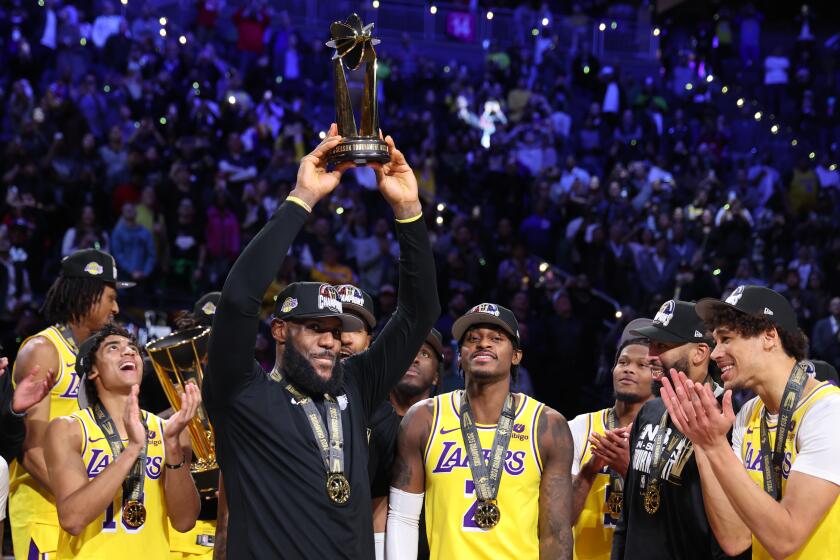A Series that will look like them
ST. PETERSBURG, FLA. — Jimmy Rollins played his high school games at Willie Stargell Field. The sign said so.
“I thought he was some guy that must have given a lot of money,” Rollins said.
Stargell was one of the greatest players in baseball history, but Rollins grew up among a generation of African American youth that paid little attention to baseball.
For all the millions baseball has poured into reviving its sport in the inner cities of America, into trying to reclaim a place alongside football and basketball in popularity among young African Americans, the World Series has sent an entirely different message.
That changes tonight, when Rollins and the Philadelphia Phillies open the World Series against the Tampa Bay Rays.
In the 2005 Series, the Houston Astros had no black players. The Colorado Rockies last year had one, an obscure relief pitcher.
But this year, the competing teams both feature African American stars, to the delight of the players involved and to the officials charged with luring black youth back to the baseball diamond.
“It’s got to be huge, just to see these faces on TV,” Tampa Bay pitcher David Price said, “so young African Americans can relate and see something to shoot for.”
Blacks accounted for 8.2% of major league players last season, according to a diversity study by the University of Central Florida, the lowest annual percentage since the study began in 1990.
This series features such stars as Rollins, the most valuable player in the National League last season; the Phillies’ Ryan Howard, the 2006 MVP and this year’s major league home run leader; and the Rays’ B.J. Upton, who needs one home run to tie the postseason record.
Price, the top pick in last year’s baseball draft, secured the outs that clinched the Rays’ spot in the World Series.
“You can’t buy better exposure than that,” said Darrell Miller, director of baseball’s first urban youth academy, located at Compton College.
“We can say all we want about the great opportunity, but it speaks volumes when they can see young, vibrant superstars showing their successes and skills on prime-time TV, on the biggest stage baseball has to offer.”
This is a new generation of players -- Rollins is 29, Howard 28, Upton 24, Price 23 -- to inspire a new generation of African American athletes to take up the sport.
“I’m delighted,” Commissioner Bud Selig said. “To have young role models -- they’re great kids and great citizens as well as extraordinary players -- does it help? In a huge way.”
The Rays have five African Americans on their World Series roster -- Upton, Price, Carl Crawford, Cliff Floyd and Edwin Jackson -- believed to be the largest number since the 2002 San Francisco Giants.
But the Giants’ contingent included no players younger than 33 -- and one named Barry Bonds. Baseball should not discount the effect that Bonds’ absence might have as black youngsters watch the World Series, said Richard Lapchick, director of the diversity study.
“One of the reasons for the decline has been because the one African American superstar over the last decade has been somebody that the media and the fans have torn apart,” Lapchick said. “When you see some of the players who will be there, that is going to be an encouraging sign.”
Ron Miller said he’ll be watching on television, and he’ll try to get his friends to watch too.
Miller is a freshman at Crenshaw High, a Los Angeles athletic powerhouse with a history of baseball excellence, including star outfielder Darryl Strawberry. Miller’s friends prefer football and basketball, but he prefers baseball.
In 1989, as baseball all but disappeared from the L.A. fields on which such stars as Strawberry, Eddie Murray and Ozzie Smith had learned the game, scout John Young founded Reviving Baseball in the Inner Cities, or RBI.
The program that Young started in Los Angeles has expanded throughout the country, funded by major league teams, corporate sponsors and foundations.
And, amid criticism that teams poured more money into developing players in the Dominican Republic than in U.S. urban areas, major league officials opened an academy in Los Angeles in 2006, providing free baseball instruction to talented young athletes.
Miller’s father, also named Ron, said he could not afford the private lessons and travel teams so common among suburban youth.
Without the academy, he said, his son would have given up baseball.
“He’d be playing football,” Miller said. “He’s built like a linebacker. But he’s in love with baseball now. He goes to the academy, and it’s like going to Disneyland for him.”
Darrell Miller, the academy director and no relation to the Crenshaw student, got a call recently from former Lakers star Mychal Thompson. One of Thompson’s sons, Trayce, had played on a state championship basketball team at Santa Margarita High, but he wanted to pursue baseball.
Trayce Thompson committed last month to play baseball for UCLA, quite the thrill for Miller.
“If I had a nickel for every baseball guy we lost to basketball, I’d be rich,” Miller said.
Major league officials next plan to roll out academies in Houston, Miami, New Orleans, Oakland and Philadelphia.
For all that baseball might do to lure African American youth, the black players in this World Series say they have to take responsibility as well.
“The more you go out and mingle with the kids, and they can see your face,” Crawford said, “the more they want to do it.”
Said Floyd: “This is a first step. Young African Americans can see baseball is a great sport.
“My idol was Harold Baines. He was busy. He didn’t come out to Markham, Ill., to see Cliff Floyd. But that’s what we need to do -- get out there, and let the kids know we care, get them off the streets and doing something constructive.”
And then they might grab a bat and pursue a dream, to grow up to be just like Rollins, or Howard, or Torii Hunter of the Angels, or James Loney of the Dodgers.
The Angels and Dodgers each qualified for the playoffs this season, the Angels with six black players, the Dodgers with five.
“They see you have success,” Rollins said. “They see you look like them, and you came from a place similar to them. And they say, ‘He made it. Why can’t I at least give it a shot?’ ”
Rollins came from the Bay Area, from Encinal High School. So did Stargell, four decades earlier. That explains his name on the high school field.
That Rollins did not recognize his name is a symptom of the decline in African American interest and participation in baseball. Selig said this World Series represents an opportunity, not a cure.
“This is a long-term effort,” he said. “We lost a generation.”
--
More to Read
Go beyond the scoreboard
Get the latest on L.A.'s teams in the daily Sports Report newsletter.
You may occasionally receive promotional content from the Los Angeles Times.











